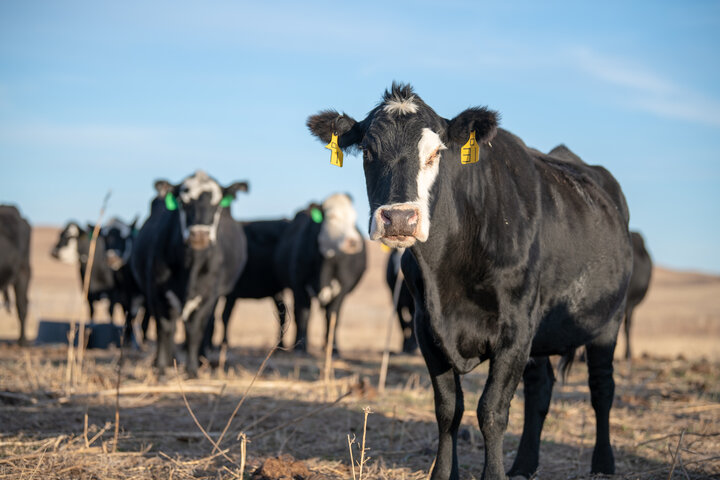Feed flushing is a management term for providing high quality feeds, usually grains, prior to the start of the breeding to increase reproductive performance. Flushing has been used in the swine industry to increase the number of ovulations in sows. Can this concept be applied to young beef females that calve in less than adequate body condition?
David Lalman at Oklahoma State University conducted research investigating the impact of changing body condition after calving on pregnancy rate in 1st-calf-cows. As expected, young females that calve in a body condition score of less than 5 and maintained BCS through 12 weeks post-calving had the lowest pregnancy rates. Heifers that calve in a BCS of less than 5 then fed increased energy post-calving, which would be somewhat like flushing the female because there is a substantial increase in weight gain in these heifers, achieve a pregnancy rate of 66%, which is well below acceptable rebreeding rates for females during their second breeding season. Interesting in this data set is that heifer that calved in a BCS of greater than 5 and were fed extra energy after calving had only three percentage units higher pregnancy rate compared to heifers that calved in a similar BCS and did not lose weight post-calving (94% vs 91% pregnancy rate).
Can increasing the energy level to young females after calving impact the post-partum interval? Again, to gain body condition after calving, a substantial amount of energy needs to be added to the diet. If heifers calve in BCS 4 and experience no change in BCS post-calving, the post-partum interval is about 131 days. If they calve in a BCS of 5 and BCS does not change, the post-partum interval is 103 days. If they calve in a BCS of 5.5 with no change post-calving in BCS, the post-partum interval is 89 days.
To maintain a 365-day calving interval, cows must become pregnant by 80 to 85 days after calving (gestation length is about 283 for beef cows and 275 to 280 days for heifers). If 1st-calvers calve in BCS of 5.5 they have a opportunity for a 365-day calving interval. The difference in post-partum for 1st -calvers that calve in BCS 4.0 with no change in BCS and BCS 5.0 and no change is 28 days. If she calves in BCS 5.5 the difference in post-partum interval is 42 days. If she calves in BCS 4.0 and BCS increases 1 condition score unit, which would be quite a feat after calving for March-calving-heifers, post-partum interval is reduced only 16 days and she still doesn't come close to maintaining a 365-day calving interval.
Some would say that all I want for the 1st-calf-cow is to just get her rebred with her second calf. To a certain extent, I would agree. But give her a chance to have a reasonable post-partum interval and ensure that she cycles before the end of a defined breeding season.
There is one study that I know of where there was a "flushing" effect on cows. The key word here is cows. Cows after calving that were thin and slightly underfed until 14 days before the start of the breeding season and then fed a high energy diet from until 30 days into the breeding season responded with enhanced reproductive performance. The "flush" diet consisted of 8.8 to 13.2 pounds of ground corn per head per day and corn silage free choice.

